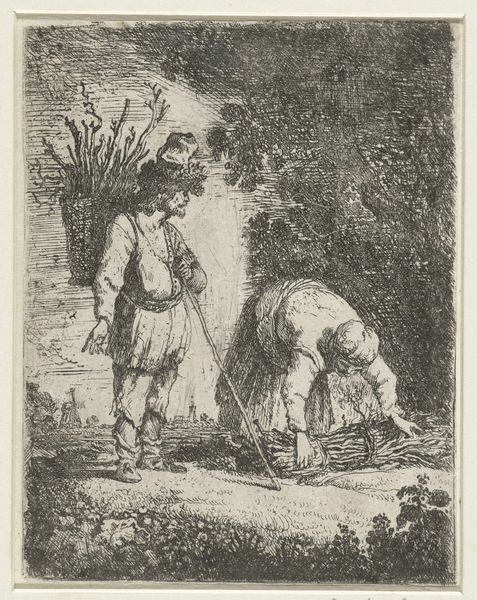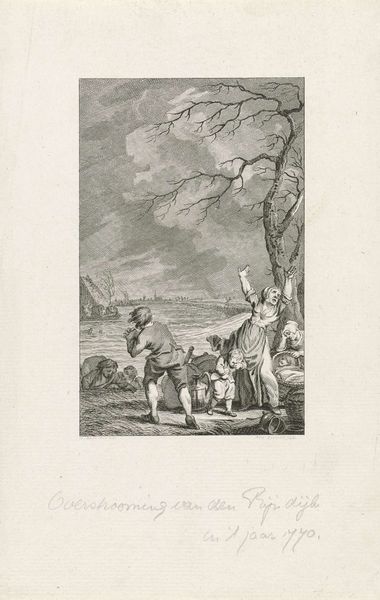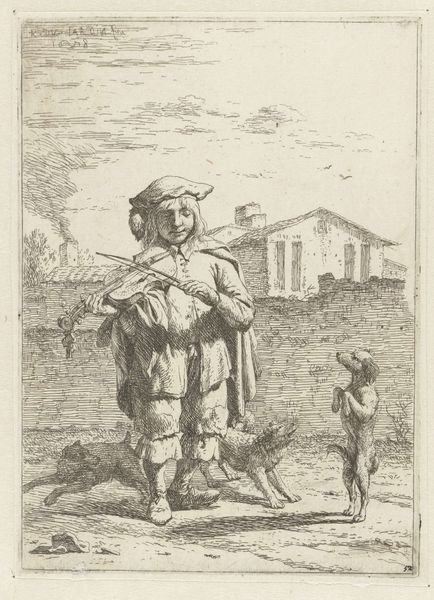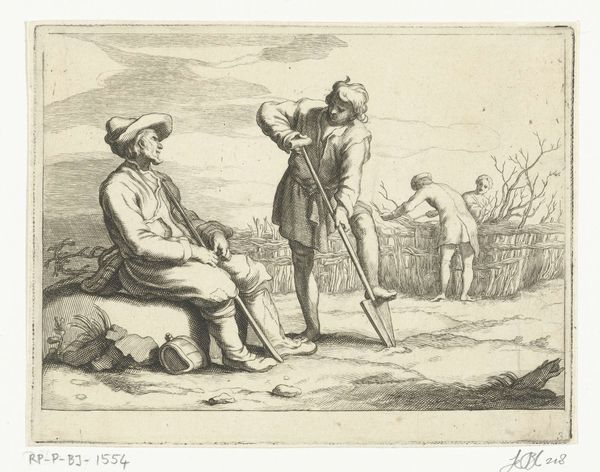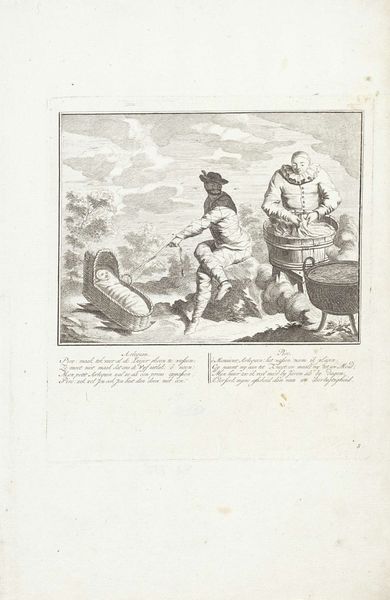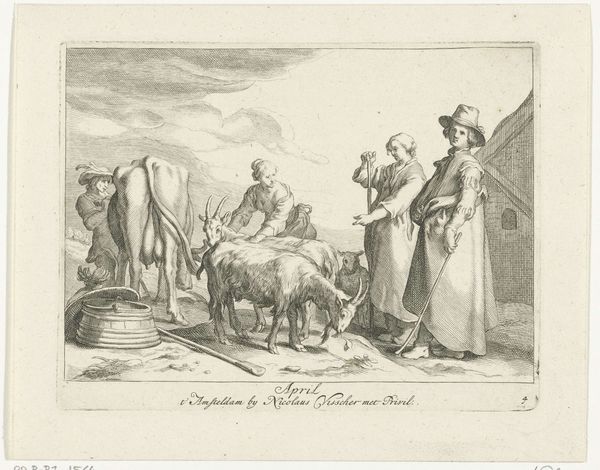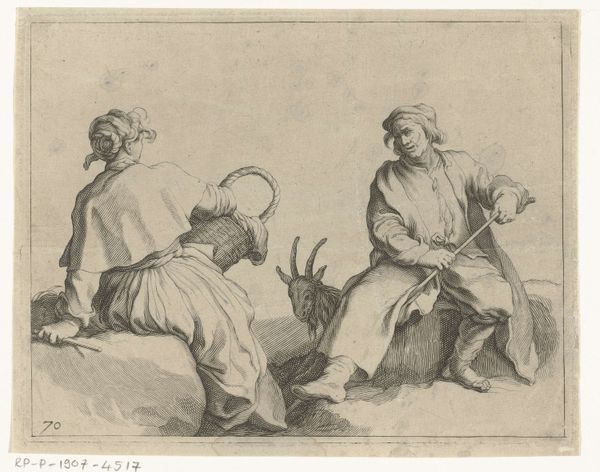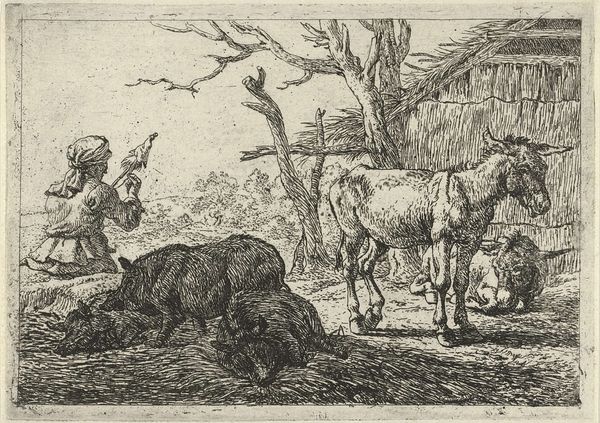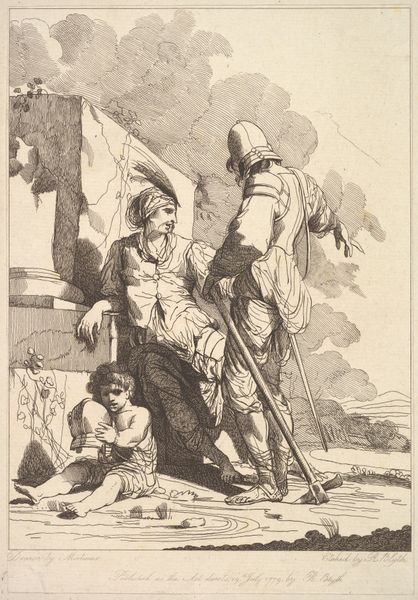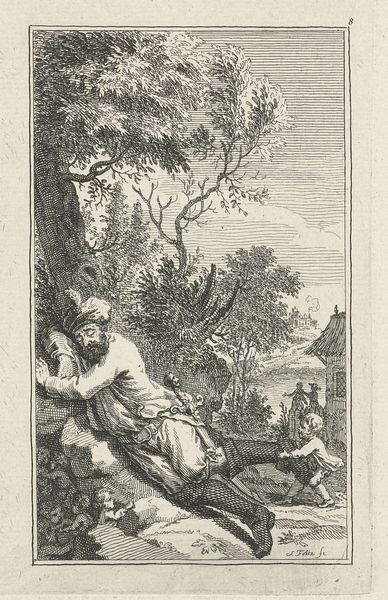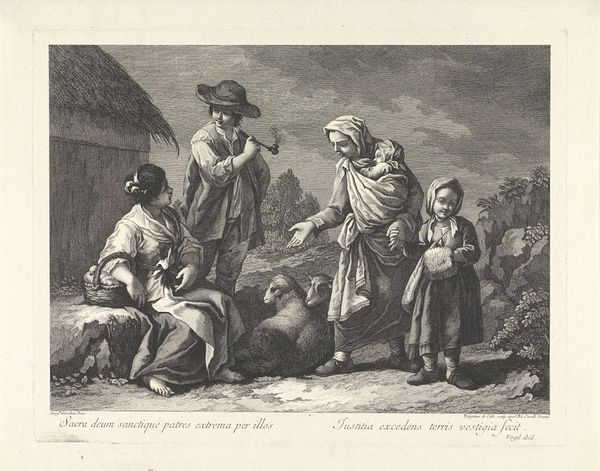
drawing, pen
#
drawing
#
pen sketch
#
landscape
#
pen
#
genre-painting
#
realism
Dimensions: height 190 mm, width 123 mm
Copyright: Rijks Museum: Open Domain
Editor: This is "Pratende mannen en koeien en schapen" by Frédéric Thédore Faber, made in 1828 using pen. It’s interesting to see these two scenes, of men talking and animals grazing, sharing the same space. What can we say about the context for an artist choosing to depict everyday life like this? Curator: It's important to consider the rise of Realism in the 19th century. There was a shift away from idealized or mythological subjects toward representing the lives of ordinary people and their environments. But do you see any hint in how these commoners are rendered in relationship to livestock? Editor: Well, it's almost as though there’s no real distinction given; Faber depicts them all plainly. Is that a political choice in and of itself? Curator: Precisely. This unflinching portrayal challenges the traditional hierarchy in art, which often reserved grand narratives and detailed rendering for the elite. By focusing on genre painting, on daily life, Faber grants visibility to those often ignored in official artistic discourse. Consider who might have consumed these images, and what messages they received about who holds social standing. Editor: It seems revolutionary for its time, treating people of different statuses as well as animals all the same! It really shifts my perspective. Curator: And, as the title tells us, men are rendered chatting or ‘pratende’, humanizing and inviting them into the composition of life that would otherwise simply entail livestock or the landscape in which it resided. Editor: That adds even more significance. It definitely changes how I look at Realism! I assumed that because Realism seeks truth in an aesthetic that that also implied some sort of inherent equality, but instead this work points to a time and place that has constructed or produced what truths may exist. Curator: Exactly, it reflects back on the mechanisms of power at work during its production and reception. So many critical questions to ask.
Comments
No comments
Be the first to comment and join the conversation on the ultimate creative platform.


